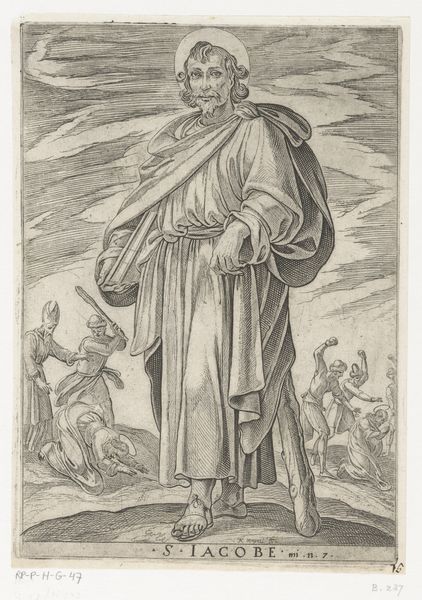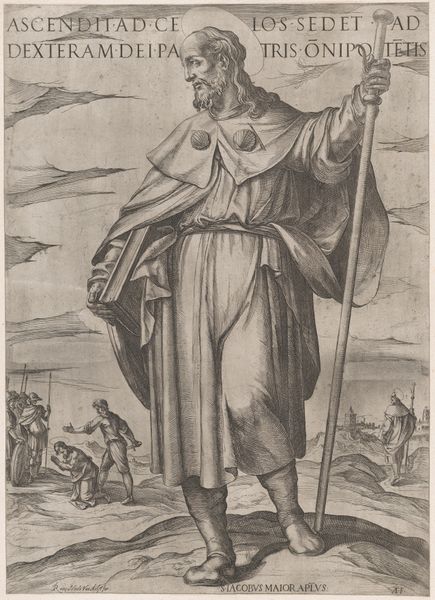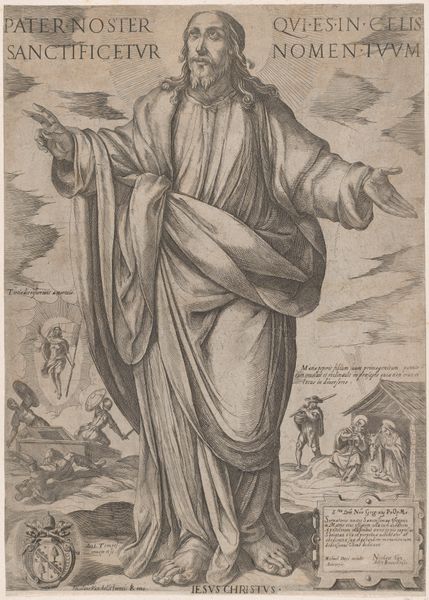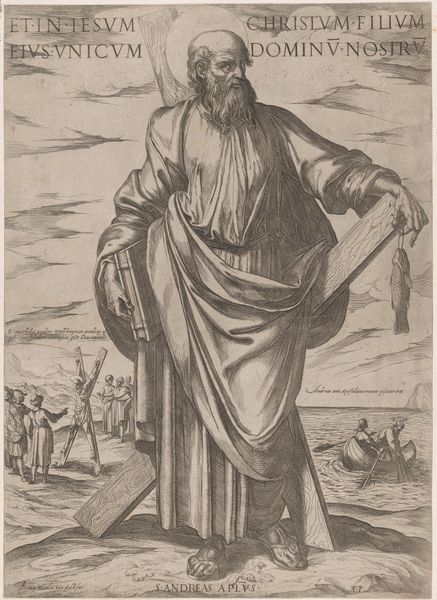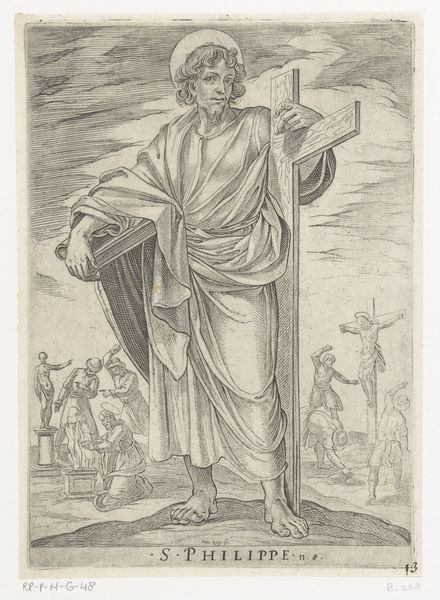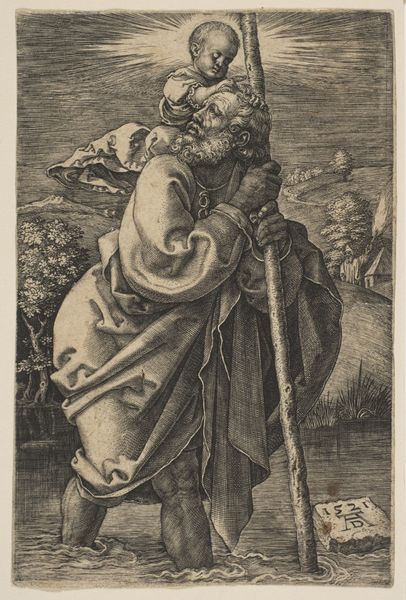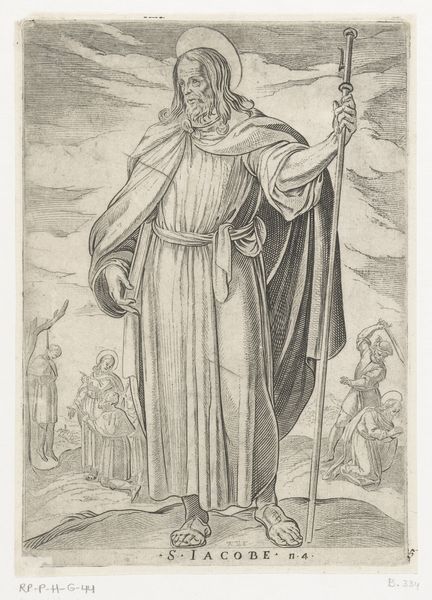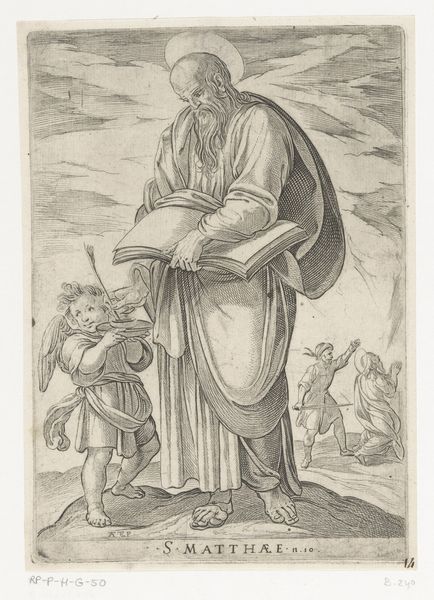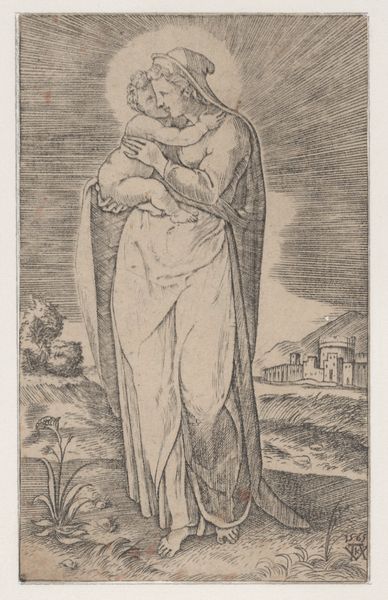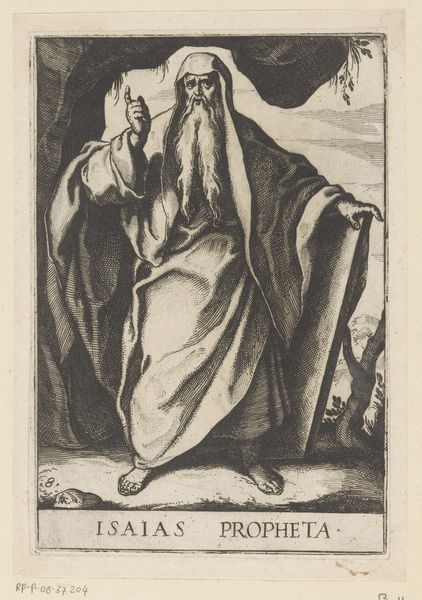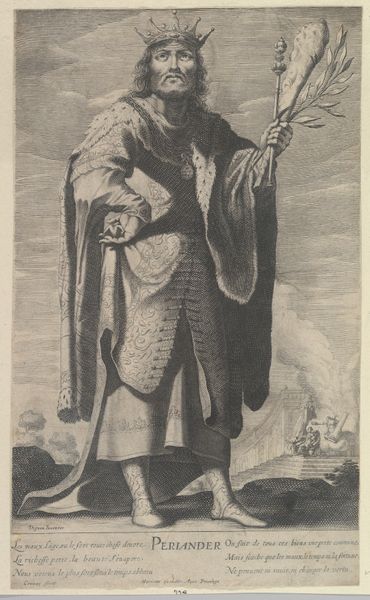
#
light pencil work
#
fish
#
pen illustration
#
pen sketch
#
pencil sketch
#
old engraving style
#
junji ito style
#
personal sketchbook
#
pen-ink sketch
#
pen work
#
sketchbook drawing
Dimensions: height 202 mm, width 143 mm
Copyright: Rijks Museum: Open Domain
Antonio Tempesta made this engraving of Saint Andrew sometime between 1575 and 1630. The image depicts the saint holding the X-shaped cross on which he was crucified. In the background, we see the crucifixion taking place. Tempesta was active in Rome at a time when the Catholic Church was eager to reassert its authority after the Protestant Reformation. The Church used art as propaganda, promoting the stories of the saints to inspire faith and obedience. This image reflects that Counter-Reformation culture, emphasizing the importance of martyrdom and sacrifice in the service of the Church. But the picture is also typical of shifting artistic institutions: Tempesta made his living as a printmaker, catering to a growing market for religious imagery among the literate middle classes. To understand this image fully, we might consult religious texts, histories of the Counter-Reformation, and studies of the print market in early modern Europe. The meaning of art is always contingent on the social and institutional context in which it is made and consumed.
Comments
No comments
Be the first to comment and join the conversation on the ultimate creative platform.
